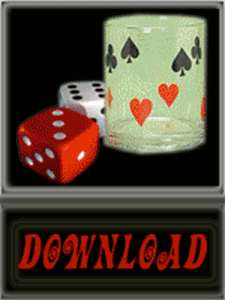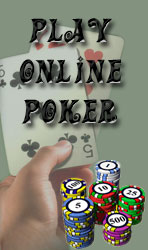Pokerwiner.com → Lessons of poker
USING GAME THEORY TO CALL POSSIBLE BLUFFS
Just as you can use game theory to bluff, you can also use it to call possible bluffs. Usually when your hand can beat only a bluff, you use your experience and judgment to determine the chances your opponent is bluffing. If your hand can beat some of your opponent’s legitimate hands, then you do a standard comparison of your chances of having the best hand plus the chances your opponent is bluffing against the pot odds you are as or better than yours, or one who is capable of using game theory to bluff, you in your turn can use game theory to thwart that player or at least minimize his profits.
Suppose the pot is $100, and your opponent assumes you will fold one out of three times rather than call a $20 bet. It then becomes profitable for that opponent to come out bluffing $20 to win $100 because he figures to lose $20 twice but steal $100 once for a net profit of $60 and an expectation of $20 per bet. By the same token, if your opponent thinks you will never fold in this situation, he will never bluff.
Therefore, it behooves you to have an opponent think you might sometimes fold, but you should call sufficiently often to catch his bluffs. When you use game theory to decide whether to call a possible bluff, you make calculations similar to those you make when deciding whether to employ a bluff yourself and you randomize your calls just as you randomize your bluffs. You figure out hat odds your opponent is getting on his possible bluff, and make the ratio of your calls to your folds exactly the same as the ratio of the pot to your opponent’s bet. If your opponent bets $20 to win $100, he is getting 5-to-1 on a bluff. Therefore, you make the odds 5-to-1 against your folding. That is, you must call five times and fold once
. You can use key cards to randomize again for example, if you catch certain unseen cards, you fold. Otherwise, you call. In contrast to using game theory to bluff, using game theory to decide whether to call doesn’t turn an unprofitable situation into a profitable one. All it does is prevent your opponent from outwitting you just as using a coin in the odds evens game prevents your opponent from outwitting you there. If your opponent is using optimum game theory casino betting strategy to bluff, there is still nothing you can do to get the best of him.
Summary
Game theory cannot replace sound judgment. It should only be used when you think your opponent’s judgment is as good as or better than yours or when you simply don’t know you opponent. Furthermore, game theory can be used accurately to bluff or call a possible bluff only in a situation where the bettor obviously either has the best hand or is bluffing for example, a player in seven card stud betting into your pair of aces with an obvious flush draw.
However, if the bettor may be betting a legitimate hand that is not the best hand, then the concepts in Chapter Twenty-one, “Heads-Up On The End,” would apply. When using game theory to decide whether to bluff, you must determine the pot odds your opponent is getting if you bet and then randomly bluff in such a way that the odds against your bluffing are identical to or almost identical to your opponent’s pot odds. If your opponent is getting 5-to-1, the odds against your bluffing should be 5-to-1. By playing this way, you give your opponent no correct decision. He does just as well or badly in the long run by calling or folding.
When using game theory to decide whether to call a possible bluff assuming your hand can beat only a bluff and assuming your judgment doesn’t give you a hint you must determine the odds your opponent is getting on a bluff. Make the ratio of your calls to your folds the same as those odds. If your opponent is getting 4-to-1 odds on a bluff, you must call randomly four out of five times to make that poker bluffing unprofitable.



